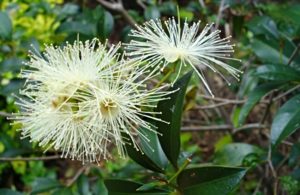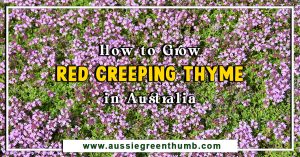Red stringybark isn’t commonly grown in gardens due to its stature, but the peeling bark is striking and, thanks to its lignotuber, it can be grown as a multi-stemmed mallee, restricting its growth to around 25m tall.
For larger gardens, parks and public spaces, Eucalyptus macrorhyncha is an interesting tree to grow, especially in eastern New South Wales and southern Victoria where it is native.
And, just because it isn’t normal, doesn’t mean you shouldn’t try it. So we’ve put together a comprehensive guide on identifying, propagating, and caring for red stringybark.
Whether you’re a gardener, or just enjoy getting to know your native trees, there’s plenty to learn below.
More...
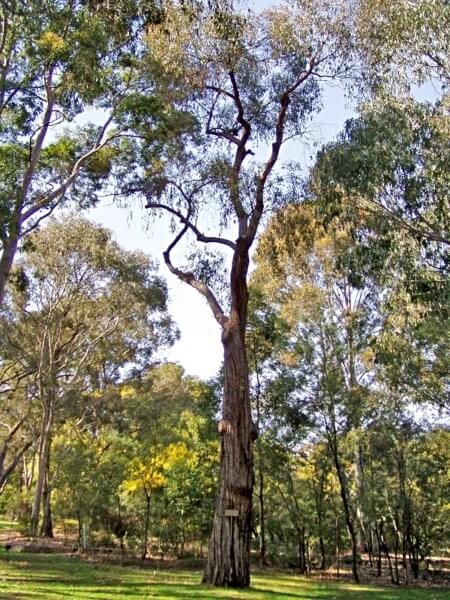
Source: Provincial Plants & Landscapes
Family: | Myrtaceae |
|---|---|
Genus: | Eucalyptus |
Species: | E. macrorhyncha |
Common names: | Red stringybark, Red gum |
Origin: | Australia |
Location: | Outdoor |
Type: | Evergreen tree |
Growth: | Up to 45m |
Sun requirements: | Full sun or light shade |
Foliage colour: | Dull, glossy green |
Flower colour: | White |
Flowering: | February to July |
Edible parts: | None |
Maintenance level: | Low |
Poisonous for pets: | Toxic to cats and dogs |
What is Eucalyptus macrorhyncha?
If grown in forest conditions, this evergreen tree can reach 45m tall on a single trunk. However, in most locations around the country, where it commonly grows in public gardens and parks, Eucalyptus macrorhyncha grows to 25m at most.
Like many eucalypts, it grows from a lignotuber at its base, which acts as a failsafe that the tree can recover from in case of fire damage. In large private gardens, that means it can be grown as a multi-stemmed mallee, or coppiced regularly to restrict its growth.
What sets red stringybark apart from many other eucalyptus species is that its stringy peeling bark is not restricted to the lignotuber. It carries on up the mature branches too and even semi-mature growth displays some peeling.
So while most coppiced or mallee eucalyptus trees are smooth, Eucalyptus macrorhyncha will display much of its characteristic bark regardless of how it is grown.
But, if you’re after something taller, or with smooth bark, there are countless other Eucalyptus trees to choose from, with some of the best selected in our guide to Eucalyptus trees in Australia.
What is Red Stringybark’s Natural Habitat?
Eucalyptus macrorhyncha is native to southeastern Australia, with a range from northern New South Wales to southern Victoria. Some naturally occurring habitats occur in pockets of South Australia around Adelaide.
It grows in open ranges and on tablelands, with poor, dry soils. The soil is not nutrient-poor, but has little in the way of accessible nutrients, so the roots spread to make the most of what they can get. This adaptation means it is particularly unhappy in moist, loamy soils unless adequate drainage is provided for young trees.
Another trope of its native habitat is that most specimens are found growing in open spaces or woodland edges, rather than in competition with other trees. This means that single-stemmed trees are usually around 35m tall, reaching up to 45m if growing in competition with other species.
Eucalyptus macrorhyncha Subspecies
There are two accepted subspecies of Eucalyptus macrorhyncha. The first is the species typifier, E. macrorhyncha subsp. macrorhyncha, and the second E. macrorhyncha subsp. cannonii.
The latter has wider flower buds, bigger flowers and larger fruit, but their other characteristics are virtually identical.
Identifying Eucalyptus macrorhyncha
A short but early flowering season is useful to help identify Eucalyptus macrorhyncha, as its flowers occur from February to July, and are followed in late winter by woody hemispherical fruit, identifiable as distinctly short seed capsules in groups of seven.
Aside from that, its glossy leaves have a dull green colouring similar to many other species, measuring 7-14 cm long in a curved lance-shaped form – offering little help in identification.
Its peeling bark, running all the way up the tree is the easiest way to distinguish it from nearby species, but in Bundarra and Barraba a similar species, Eucalyptus laevopinea, is nearly indistinguishable.
However, the buds and seed capsules of E. laevopinea (sometimes called the silver top stringybark) are arranged in groups of seven, nine or eleven, and the bark is usually (but not always) a brighter grey than E. macrorhyncha.
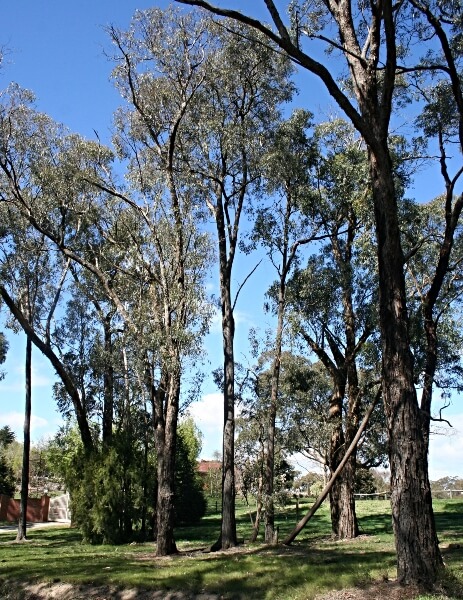
Source: Yarra Ranges Council
Common Uses for Eucalyptus macrorhyncha
While Eucalyptus macrorhyncha is not strictly edible and should be considered toxic, there are preparations of its leaves and resin that can be used to treat various medical concerns.
For example, its powerfully astringent resin contains high concentrations of tannins, and are used to treat topical inflammation and relieve diarrhoea or bladder inflammation.
The leaves contain 6.24% rutin, a compound that can be used to strengthen capillaries in patients with poor blood flow or to increase oxygen supply to injury sites. Both treatments should be used with the advice of medical professionals, and not self-administered.
Other uses include a mix of traditional and contemporary craft, as the bark can be used to build canoes, and the hollowed-out branches are commonly used to make didgeridoos.
How to Grow Red stringybark
Eucalyptus macrorhyncha needs a lot of space to grow, so is not one for small gardens. When coppiced, it can be maintained as a hedge or a functional fire-wood producing plant, but even mallees are generally too large for most gardens.
The growing conditions for all forms of this plant are the same though, so follow our guide below to learn how to plant, propagate and care for these wonderful stringy barked trees.
Ideal Conditions for Growing Eucalyptus macrorhyncha
Eucalyptus macrorhyncha should be planted at least 30m away from buildings or solid structures. Its roots are wide spreading and shallow rooted, and will lift shallow concrete or hard paving.
When regularly coppiced from the time of planting, the roots restrict themselves to the size of the tree they are supporting, so can be planted nearer to buildings in this case.
Follow the specific guidance below for preparing the soil and finding a suitably sunny spot for Eucalyptus macrorhyncha.
Soil & Drainage
Eucalyptus macrorhyncha requires poor, free-draining soil. They can grow in sandy soils and dry loam, or even shale. Avoid planting red stringybark into clay or boggy conditions as the young trees will almost certainly suffer from root rot or fungal problems.
If you must plant them into less-than-ideal soil, plant them slightly proud of the ground, in mounded soil, with plenty of grit added to the base of the planting hole to give them the best chance of survival.
Light & Temperature
Eucalyptus macrorhyncha should be planted in full sun where possible, but they will cope with light shade while they are young. The only warning here is that the more shaded their spot, the faster, and taller they will grow.
Planting these trees in full sun also helps to mitigate any humid settings, which can cause rare fungal issues and damp wood beneath the peeling bark. These conditions are unlikely in Australia, but planting in bright, well-ventilated conditions is ideal.
They are hardy down to -7°C, following warm summers, so will withstand frost, even while young, but avoid wet winter conditions. They are also completely drought tolerant and after the first year, should not need watering at all.
Shelter
Young red stringybark develops tall stems quickly, so protect them from high winds if you can. Once established they are happy in most conditions and don’t mind exposure to salty winds or strong winds.
Planting Eucalyptus macrorhyncha
It is not essential to stake red stringybark trees. They are tough trees, and quick to develop lateral anchoring roots. However, as a precaution for any tree planted in open spaces, it is well worth providing a stake for the first few years to support them against root rock as their roots spread and develop.
How to Propagate Eucalyptus macrorhyncha
Propagation from seed is the simplest and most cost-effective way to propagate Eucalyptus macrorhyncha. Cuttings are very unlikely to be successful, and grafted cuttings have poor success rates with this particular species, though do provide guaranteed matches to the parent tree if you are growing for commercial purposes.
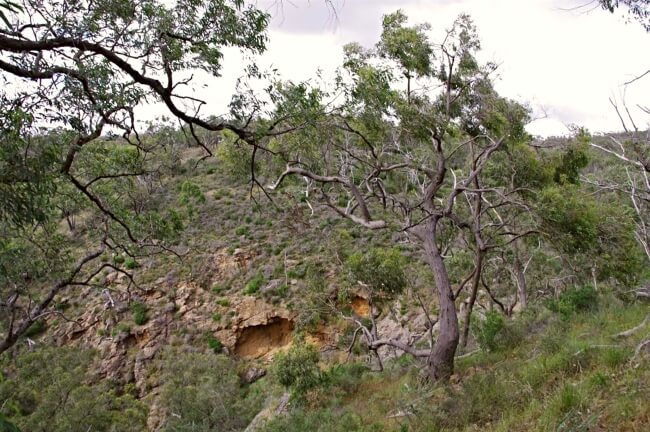
Source: ExplorOz
Propagating Eucalyptus macrorhyncha from Seeds
To grow red stringybark from seed you will need a free-draining substrate, made from inert materials. We use pure coco coir, but you could use a very sandy compost, mixed with perlite for similar results.
There is no need to cold stratify the seeds of Eucalyptus macrorhyncha, and the seeds will keep for up to five years if kept dry and away from light. For long-stored seeds, soak them for 8 hours before sowing.
Start by filling a tray with expanded coco coir (blocks of condensed coir are the most cost and space-effective, and keep for years without degrading).
Sprinkle Eucalyptus macrorhyncha seeds sparsely over the surface of the compost, and then lightly water them in to make sure there is good contact with the coir. Note that the coir should be moist following expansion so water very lightly at first to avoid having the seeds in overly damp conditions.
Germination usually takes around four weeks but can be faster. Store the seed tray somewhere bright, warm and airy, misting every couple of days to keep the soil moist but not wet.
Once germinated, allow the seedlings to grow to 10-15cm tall, before gently pricking them out into individual pots. Once potted on, leave them until roots have filled the pot, but before they become root-bound. Eucalyptus hates root disturbance, so minimal potting is advised.
Caring for Eucalyptus macrorhyncha
Caring for mature Eucalyptus macrorhyncha is straightforward, but taller trees should always be worked on by professionals with the appropriate equipment.
There are differences in caring for coppiced eucalyptus, compared to mature trees, and differences again between those and mallees, where the tree has multiple main branches coming from the base.
Personally, I would advise growing Eucalyptus macrorhyncha as a mallee, which is possible even with a mature tree, as they can be cut back into the lignotuber to trigger new stems.
This is because it is one of the few Eucalypts that has the same bark texture regardless of the age or type of branch, as mentioned earlier. Once pruned into a mallee, red stringybark can be left to develop without intervention, or pruned every five to ten years to restrict its height.
Coppiced trees are simpler to take care of because they can be cut back to the lignotuber, as regularly as required, without the aim of encouraging mature growth, or the risk of over-sized eucalyptus trees in small spaces.
However, pruning red stringybark as a coppice means that you will never have the distinctive bark peeling as dramatically as you might like. The best time to prune red stringybark is just after flowering in late winter. This encourages new growth, and as they are never fully dormant, involves minimal risk.
Common Eucalyptus macrorhyncha Problems
Eucalyptus macrorhyncha does not have any species-specific pests but even established trees do suffer from damage caused by psyllids, gall wasps, borers and leaf beetles. Gum moths are also particularly problematic on young trees, and all of these pests are capable of doing major harm to coppiced red stringybarks.
The pests above have similar impacts on all eucalyptus trees and will spread fungal infections, particularly those that harm leaf growth. Below, we’ll look at how to manage pest infestations, and check for, and limit the impact of diseases.
Red Stringybark Pests
Eucalyptus longhorned borers are the most common borers found on red stringybark. They eat into the wood, and can allow fungal spores to enter as a result. The tunnels and holes they create also cut across important water and nutrient tracts that send essential food from the roots up to the leaves.
Heavy infestations can cause some die-back or leaf drop higher up the tree, but it is rare.
They mostly occur lower down the tree and are out of reach of most predators, so it is usually safe to apply a few drops of neem oil to their holes if you see them. This will kill existing borers and repel new ones.
Gall wasps are often confused for rust, thanks to the lesions created by laying their eggs into the leaf surface. When larvae hatch, they eat the leaf from the inside out, usually around the base of the leaf.
This means that nutrients can’t travel to the tip of the leaf, and there will often be patches of grey following signs of galls. If you spot them, remove them.
Other pests should be tolerated on mature trees, and manually removed on young trees, saplings or coppiced stringybarks. Pesticides should never be used on eucalypts, as they are a vital food source for native wildlife, some of which rely entirely on these plants for sustenance.
Eucalyptus macrorhyncha Diseases
There are no extremely common diseases specific to red stringybark but, like the insect guidance above, they are not impervious to common problems.
Canker, crown rot, root rot (usually fusarium), cinnamon fungus, myrtle rust and powdery mildew all affect these trees, especially when grown in commercially cultivated settings, or garden settings.
Essentially, if they are away from their natural habitat, they can become susceptible to fungal problems. To prevent this from happening in the first place, keep on top of pest management, and make sure they are planted with good drainage.
Allowing them to dry out during the summer, and preventing them from becoming too wet during winter is the most effective prevention for disease.
Red stringybark Frequently Asked Questions
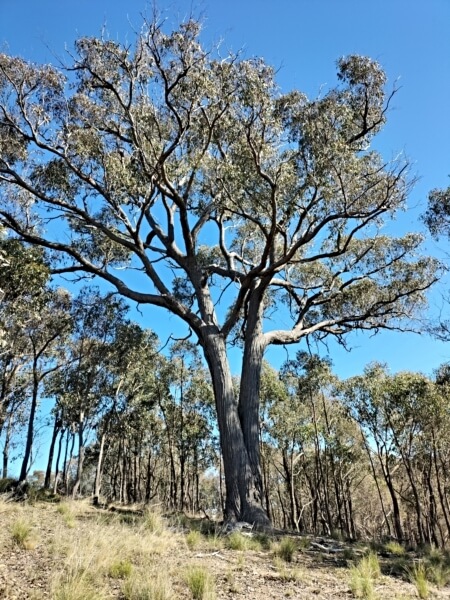
Source: Canberra Nature Map - NatureMapr
What is the difference between Eucalyptus macrorhyncha and Eucalyptus laevopinea?
Eucalyptus laevopinea can be distinguished from Eucalyptus macrorhyncha by its brighter bark colouring. Both have peeling bark that extends up their stem and similarly sized flowers so it can be hard to tell them apart. There are also differences in the appearance and size of their fruit.
Who should not use Eucalyptus macrorhyncha?
Anybody with chronic respiratory issues should avoid inhaling Eucalyptus macrorhyncha preparations too regularly as it can irritate the throat and nasal passageways. It should also not be used, in any way, by people with kidney disease, low blood pressure or liver disease unless specifically advised by your doctor.
Is Eucalyptus macrorhyncha invasive?
E. macrorhyncha is not specifically an invasive species but recent reports of dieback spreading amongst native populations in South Australia are potentially concerning.
Plants taken from here, grown from cuttings from that location, or cultivated nearby could potentially carry disease that might spread to other species. Be responsible when sourcing red stringybark.
Is Eucalyptus macrorhyncha toxic to pets?
E. macrorhyncha is incredibly toxic to pets. Dogs and cats should not be allowed to ingest any part of the plant, and even essential oil diffusers can be toxic and cause severe reactions in any pet.
Avoid having cuttings of E. macrorhyncha around the house if you have pets.
Does Eucalyptus macrorhyncha have invasive roots?
The roots of E. macrorhyncha are not invasive. They are wide-spreading and shallow but are not commonly reported to damage property. Even so, they are tall trees, and the roots near the trunk can lift paving, so avoid planting them within 25-30m of buildings.
Is touching Eucalyptus macrorhyncha bad for your skin?
Anybody with sensitive skin should steer clear of E. macrorhyncha. While all eucalyptus trees are potential skin irritants, red stringybark is particularly irritating to sensitive skin. Wear gloves when pruning as a precaution.
What is the lifespan of Eucalyptus macrorhyncha?
E. macrorhyncha lives for several hundred years and will grow back from the lignotuber even after wildfires. This trait common amongst eucalyptus, means that most species are capable of living for many centuries.
What is the most common use of Eucalyptus macrorhyncha?
Perhaps not the most common, but the most famous use for Eucalyptus macrorhyncha is that its branches are hollowed out and used to make didgeridoos. The traditional instruments are then decorated, and the wood has natural preservatives that help keep them in pristine condition.
Should I put Eucalyptus macrorhyncha leaves in my shower?
Eucalyptus leaves hung beneath a running shower can be wonderful for the body and soul, but Eucalyptus macrorhyncha isn’t the best to use for this purpose. It will have similar effects, but it can also be irritating to sensitive skin.
Is Eucalyptus macrorhyncha useful for wildlife?
Eucalyptus macrorhyncha is a useful tree for wildlife. Many insect species nest beneath its bark, and birds use them, as well as the sap and nectar from flowers as an important food source.
The flowers are useful for pollinators, and the tall canopies offer a safe foraging space for birds and mammals that feed on their leaves.
Add Character and Natural Beauty to Your Outdoor with Eucalyptus macrorhyncha
While this isn’t the tallest Eucalyptus tree in the genus, it is still probably too large for most gardens. However, its unique bark texture, paired with its resilient lignotuber does offer some potentially interesting choices for keen and experimental gardeners or landscape designers.
Like all Eucalypts, there are pest problems, but they are mitigated by maturity, and should always be considered in relation to their usefulness in deterring problematic pests as well.
Overall, Eucalyptus macrorhyncha is an interesting tree with a resilient habit. If you’re looking for something interesting to grow, then it's worth considering red stringybark as an option.
Published on February 22, 2024 by Nathan Schwartz
Last Updated on March 25, 2024

